Anteromedial approach to the talus
1. Indications
The anteromedial approach is usually employed in combination with the anterolateral approach in order to obtain an anatomic reduction of displaced and comminuted fractures.
In the less common situation where the fracture of the talar neck is not comminuted, one can obtain an anatomic reduction and fixation using only the anteromedial approach.
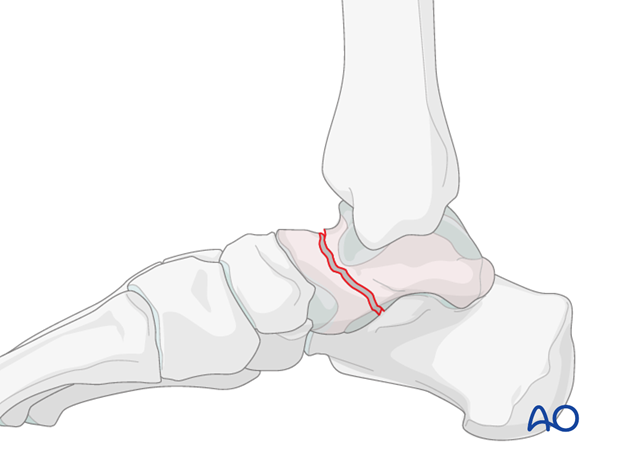
2. Anatomy
One must not damage the blood supply to the talus. The neck of the talus receives branches from the medial and lateral side. The body of the talus is supplied almost exclusively from its posteromedial aspect.
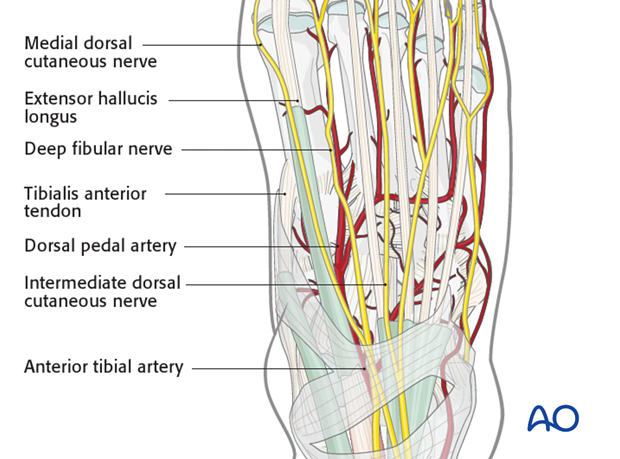
The anteromedial approach avoids these two neurovascular bundles and provides access to the medial talus and surrounding joints.
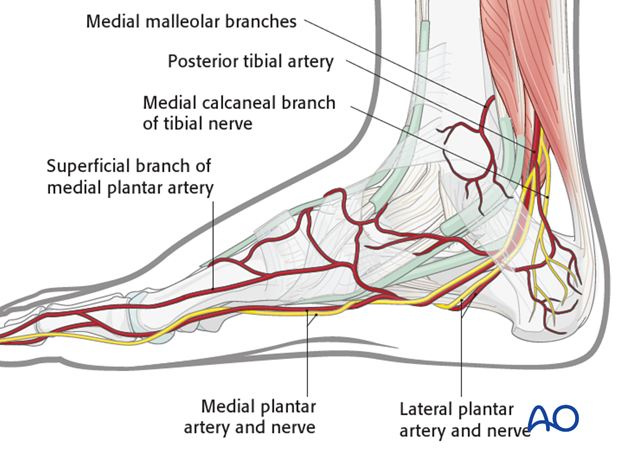
3. Skin incision
This incision runs from the medial malleolus proximally to the base of the first metatarsal distally.
For more complex fractures the incision may be extended proximally.
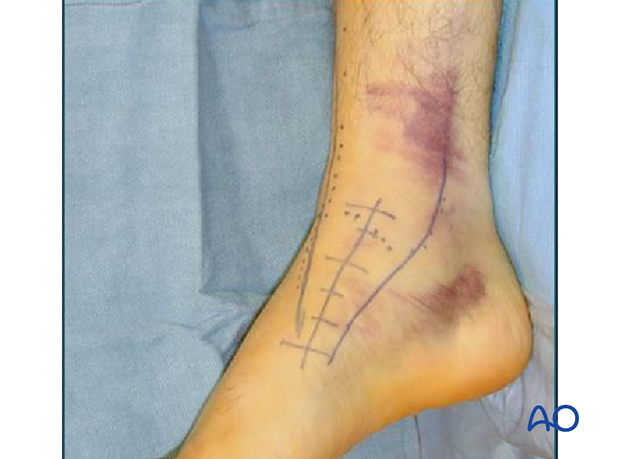
It is most important not to damage the deltoid branches which arise posteromedially and supply the medial two thirds of the talar body.
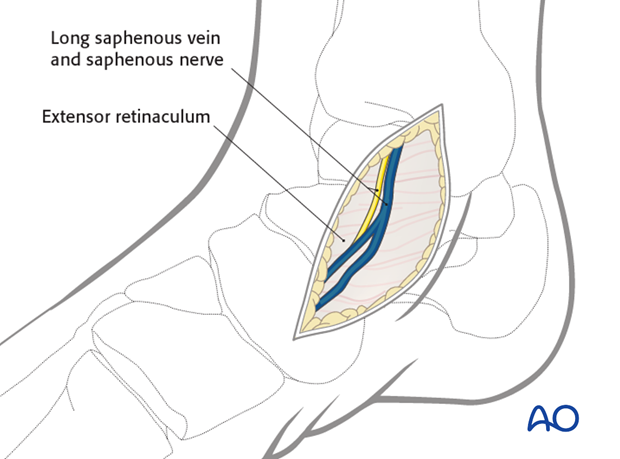
4. Exposure of the anteromedial talar neck
Once skin and fascia are incised, one encounters the fracture hematoma which should be evacuated in order to expose the underlying infero-medial aspect of the neck, and the fracture.
The arrow points to a simple fracture of the talar neck, which is less common.
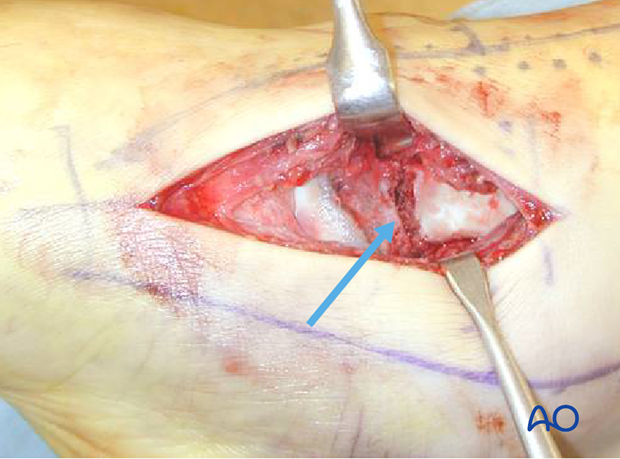
5. Debridement of subtalar joint
The fractures on the medial side are often multifragmentary. Fragments which are displaced into the subtalar joint must be debrided to allow an anatomic reduction of the subtalar joint.
Restoration of length, if the fracture is comminuted, depends on anatomic reduction of the lateral aspect of the talar neck.













